I have always been associated with multiple-formation offenses, and I view the ability to line up in a no-back set as a simple extension of this philosphy. We've developed nomenclature and rules that not only shorten formation names, but provide easy-to-grasp alignment terms as well.
In order to align receivers, we use the following:
From 1 TE/1 RB, the option route by the back is helpd by the stack. W is now a true "walkaway" player, and there is a greater chance to get into the space vacated as M goes strong. We use the RAM Advantage Principle here.
Sometimes, EMPTY sets can benefit the passing game even when the defense goes with a 3 down front. Here, the offense uses empty to get a 3 down front and minimize the pass rush; it then uses sweep action to dislodge defenders in the way of the pattern. Once again, a basic pattern is used.
The moral to the story is that EMPTY sets are an effective tool if used with a purpose. Like anything else, they can get a predicatble response from the defense, or create more space for a receiver (or runner). As discussed in my previous blog about gameplanning, there are also great ideas that can be gained from a protection aspect.


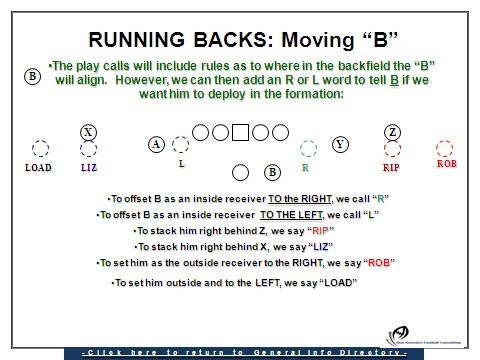
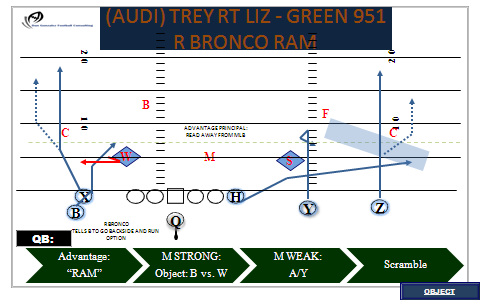
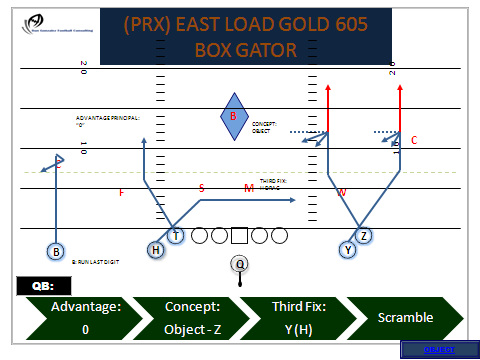
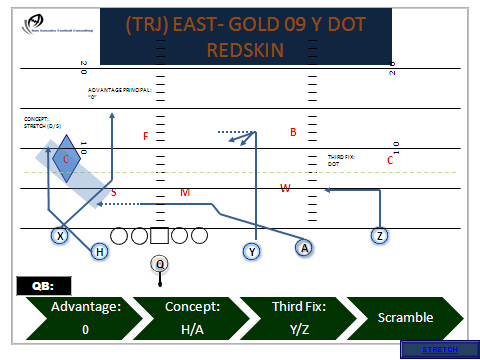
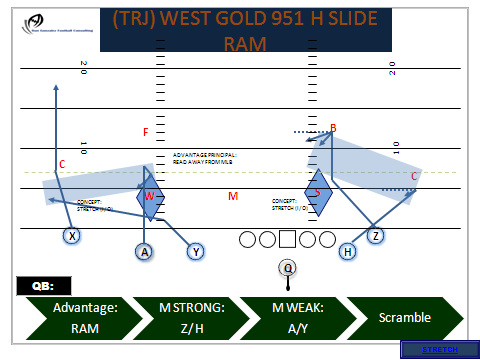
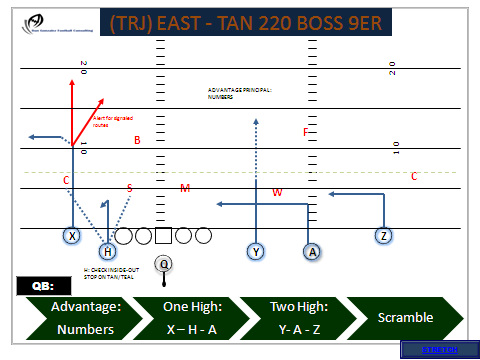
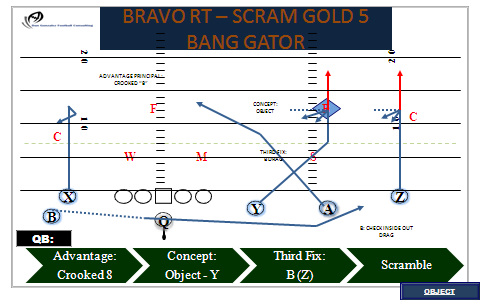
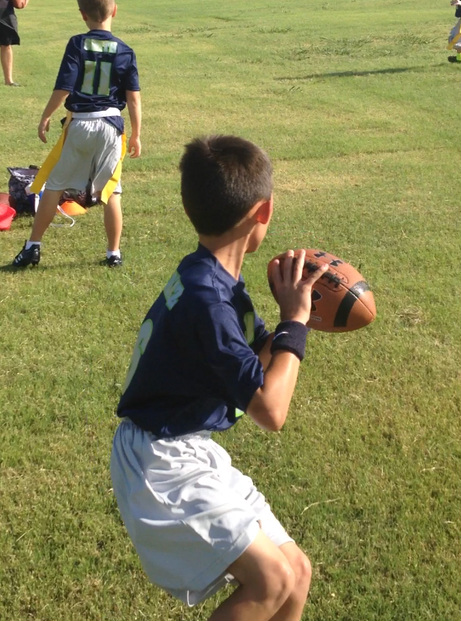
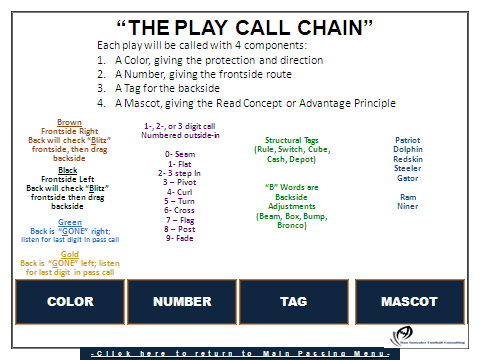
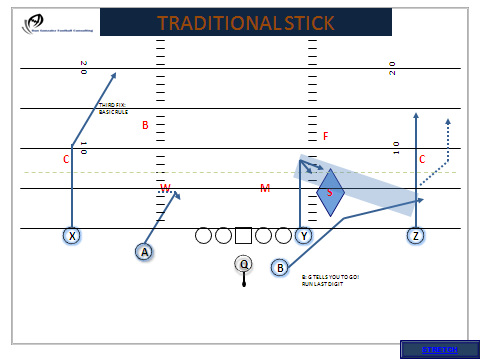
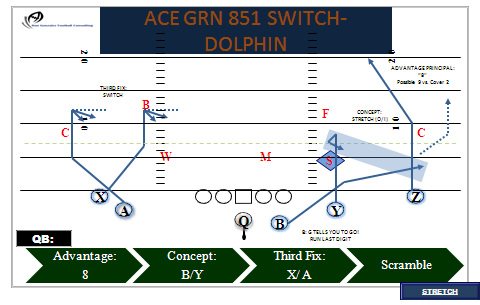
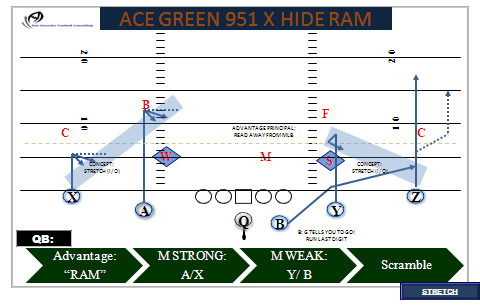
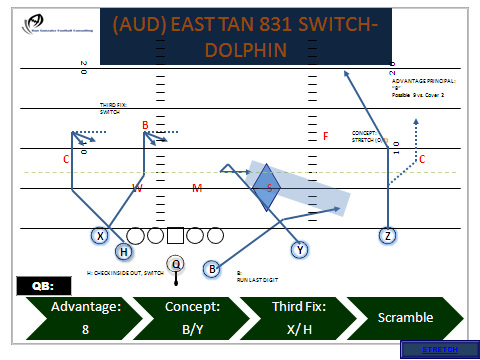
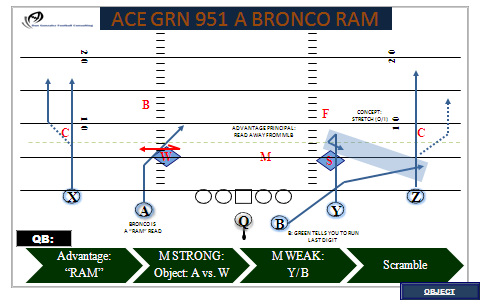
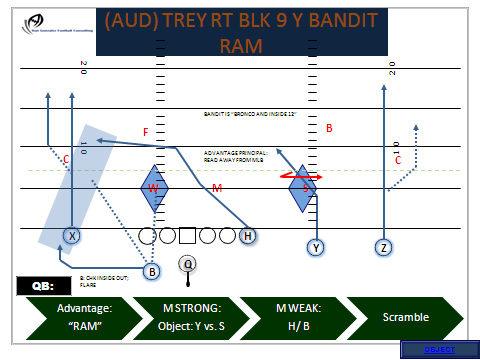
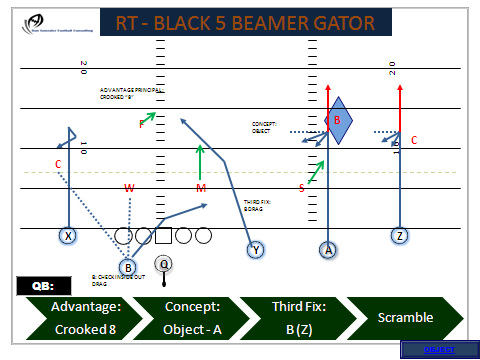
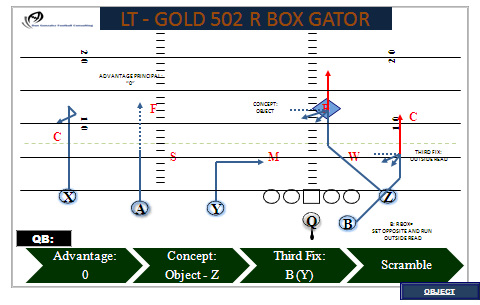
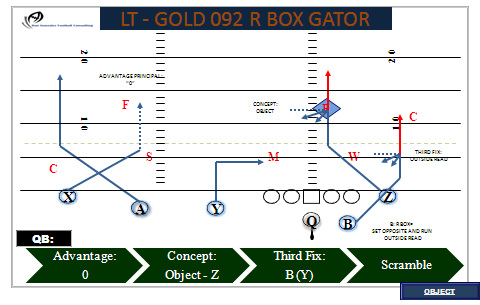

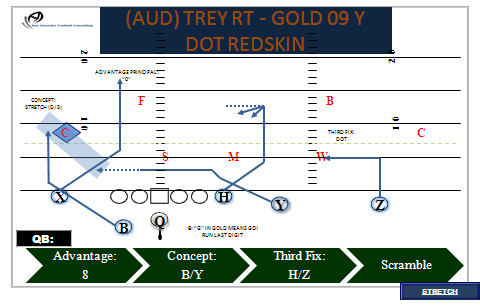

 RSS Feed
RSS Feed
